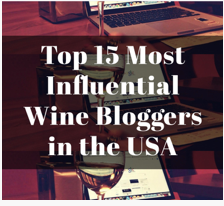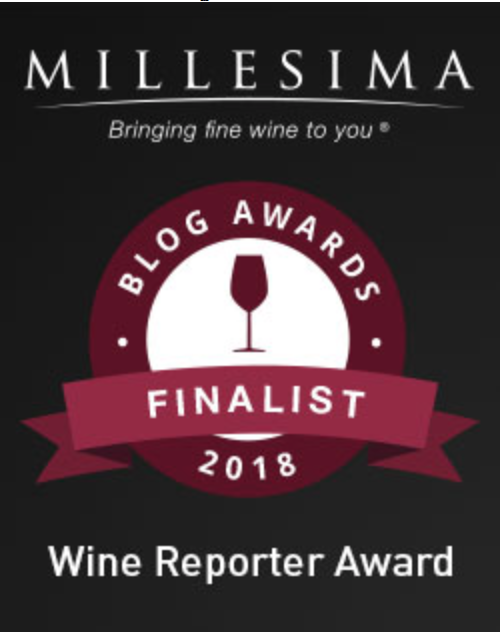A few weeks ago, I was out in the Dry Creek Valley for a couple of days. I stayed at Grape House, the wonderful Bed and Breakfast at Goodkin Vineyards on Dry Creek Road. On my first evening there, Donald Goodkin organized a tasting with a few of the growers/vintners in the Valley.
After we got through with the introductions, it was time to get down to some tasting. The assembled crew had gotten together and decided the best order to taste the wines that they had brought over with them.
 First up were Erik Miller’s wines from Kokomo Winery. We started off with the 2013 Kokomo Sauvignon Blanc Timber Crest Vineyard (retail $20), which was unlike any other Sauvignon Blanc that I remember having. Erik likes to try making a different style every year (much to the chagrin of Randy Peters, his vineyard manager). The fruit came from nine-year old wines that had been part of the Kokomo production since 2006. For this vintage, he picked a third of the crop at 22 Brix (Brix is a measure of sugar content in the grapes, the higher the Brix, the more potential alcohol, but also comes with lower acidity—thus the ever important decision of when to pick). The other 2/3 of the crop was picked 10-12 days later at 23.8-24 Brix. This second pick provided much more fruit and some more sugar, to round out the acidity from the first pick.
First up were Erik Miller’s wines from Kokomo Winery. We started off with the 2013 Kokomo Sauvignon Blanc Timber Crest Vineyard (retail $20), which was unlike any other Sauvignon Blanc that I remember having. Erik likes to try making a different style every year (much to the chagrin of Randy Peters, his vineyard manager). The fruit came from nine-year old wines that had been part of the Kokomo production since 2006. For this vintage, he picked a third of the crop at 22 Brix (Brix is a measure of sugar content in the grapes, the higher the Brix, the more potential alcohol, but also comes with lower acidity—thus the ever important decision of when to pick). The other 2/3 of the crop was picked 10-12 days later at 23.8-24 Brix. This second pick provided much more fruit and some more sugar, to round out the acidity from the first pick.
Erik did not stop there, however. He fermented that first third in neutral French oak instead of perhaps the more “standard” stainless steel. The other 2/3, that was picked at the higher Brix level, was fermented in new acacia barrels. A few winemakers are beginning to use acacia (the wood is actually from black locust trees) barrels since it adds a floral quality to the wine and does not impart any of the woody characteristics associated with oak barrels.
If all that were not enough, a small amount of the Sauvignon Blanc was co-fermented with some Muscat. The result? One of the most complex and interesting Sauvignon Blancs I have ever had: tons of fruit (apricot and pear) with incredible depth, and vibrant acidity. All this for $20? Outstanding. 90-92 Points.
 Erik next poured his 2013 Kokomo Grenache Rosé Pauline’s Vineyard (Retail $24). I am a huge fan of rosé, and like most people who are fans of the style, I drink it year-round. I also get really excited when I find a wine that is made from grapes that are farmed to be a rosé (and not a saignée—wine that is bled off of a red wine after a brief contact with the skins). The difference? Dedicated rosés for me offer deeper flavors and more complexity. They also tend to be longer lasting—they can be kept for several years without fear of losing their vibrancy.
Erik next poured his 2013 Kokomo Grenache Rosé Pauline’s Vineyard (Retail $24). I am a huge fan of rosé, and like most people who are fans of the style, I drink it year-round. I also get really excited when I find a wine that is made from grapes that are farmed to be a rosé (and not a saignée—wine that is bled off of a red wine after a brief contact with the skins). The difference? Dedicated rosés for me offer deeper flavors and more complexity. They also tend to be longer lasting—they can be kept for several years without fear of losing their vibrancy.
The fruit comes from Pauline’s Vineyard, where Randy Peters was born, is named after his late mother—I imagine the vines are rather well-maintained. After a whole berry press, the juice goes through a long, cool fermentation in stainless steel, thus retaining the natural characteristics of the fruit.
In the glass, the wine is a very light salmon, which Erik stated “was to let people know we were serious.” On the nose, it reminded me of a strawberry rhubarb pie, one of my all-time favorites. The strawberry continues onto the palate where it was immediately clear that Erik got it right—this is a serious wine. Rich and complex with an impressive finish, this wine will convert even the most steadfast cynic into a rosé lover. Outstanding. 91-93 Points.
 After tasting a barrel sample of Gerry Pasterick’s Viognier (fantastic, but the subject of a future post), Erik poured his 2012 Kokomo Grenache (Retail $32), which comes from two different vineyards on opposite sides of the valley—both owned and farmed by Ray Taldeschi, who was sitting to the right of Erik. Although this was the first vintage of Kokomo’s Grenache, Erik feels that the variety could be the next “big grape” to come out of Dry Creek.
After tasting a barrel sample of Gerry Pasterick’s Viognier (fantastic, but the subject of a future post), Erik poured his 2012 Kokomo Grenache (Retail $32), which comes from two different vineyards on opposite sides of the valley—both owned and farmed by Ray Taldeschi, who was sitting to the right of Erik. Although this was the first vintage of Kokomo’s Grenache, Erik feels that the variety could be the next “big grape” to come out of Dry Creek.
Almost immediately there was a groan from Randy Peters at the other end of the table, and Ray Taldeschi started to slowly shake his head. Not that they necessarily disagreed with Erik, but Ray indicated that Grenache is particularly labor-intensive and won’t grow well in clay as it requires a lighter soil. So, from a grower’s perspective, neither Ray nor Randy seemed to be very high on Grenache potentially growing in popularity.
Based on Erik’s wine, though, they might be farming more Grenache….
As Erik poured the wine, he described it as a “hot climate Pinot Noir” which certainly piqued my interest. He added that the vineyard on the West side of the Valley provided a red fruit component while the East side vineyard provided more dark fruit. In the glass, the wine was light and translucent with cherry and strawberry prominent on the nose. On the palate, Erik was spot on with his assessment—very Pinot-esque but with an added white peppery spice note that called for food. Outstanding 89-91 Points.
We are just getting started here, folks! Up next are two wines from Gerry Pasterick. Stay tuned!








This was really interesting and I dont drink wine as u may remember. Well almost never. Very cool learning a bit more about the complexities!!
LikeLike
It is the complexities that certainly make it more interesting!
LikeLike
Ha! I love the groans. Sounds like it was a great experience with delicious.
LikeLike
It was a lot of fun and I certainly learned a bunch!
LikeLike
Mmmmm, Beautiful Men Drinking Wine. Love it!
LikeLike
You can only say that because I am not in the picture!
LikeLike
Well, next time you should have one of them take the photo so you can be in it! Or one of those group selfie photos 😉
LikeLike